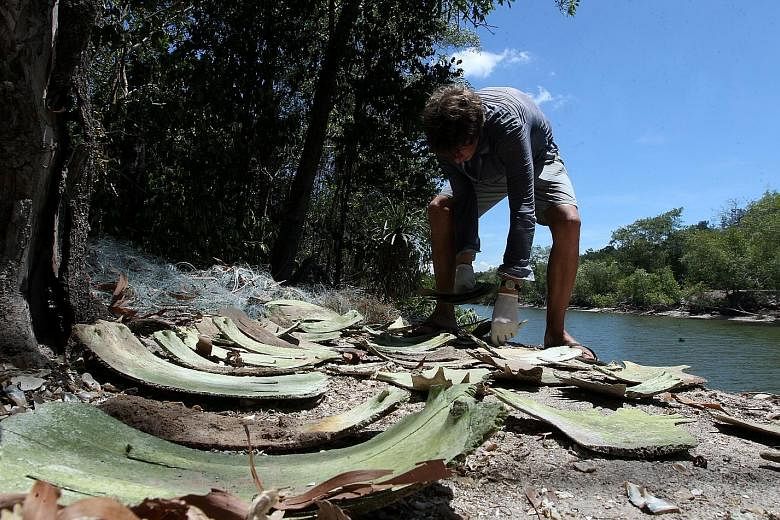KUALA KERTEH (Terengganu) • On a small island in a Terengganu river near Kuala Kerteh jetty lies a turtle graveyard.
Turtle carcasses were routinely dumped on the island by fishermen on their way back from the sea over the last few years.
No bigger than a football field and overgrown with mangroves, the swampy island is half-submerged during high tide in the monsoon season, thus hiding the carcasses from view.
This year's dry spell, however, has made it possible to wade into the swamp and clamber onto the island.
A visit by The Star to the island found 55 pieces of old turtle bones in a 45-minute search, including rib bones that form the carapace and belly plates. The visit was organised by Lang Tengah Turtle Watch co- founder Raphe van Zevenbergen.
The organisation received a tip-off about the so-called "turtle grave" by a local fisherman, shortly after its founder Hayati Mokhtar began investigating the recent spike in turtle deaths.
"There is no way these turtles could have come here and died naturally. This is a freshwater river and the banks are very steep so the turtles couldn't have climbed up," said Mr van Zevenbergen, who found the bones along the edge of the swamp.
Looking through the bones, which he later hid deeper in the swamp, he estimated them to be over a year old.
"The bones we have found are probably just the tip of the iceberg. Given that most were almost entirely consumed by the mangrove swamp, many more would have sunk to the muddy depths."
The killings of the turtles is ironic because the sea creature is the official animal mascot of Terengganu state, which is located by the South China Sea.
The fishermen dumped the turtle carcasses secretly as they could get into trouble with fishery authorities for illegally laying out nets near the shoreline where these turtles land to lay eggs.
Fishermen who live in the area use metres upon metres of these illegal nets called "pukat pari", or stingray nets, to catch stingrays along the shores. Some of these nets are stretched as close as 30m from the beach, thus entangling many turtles.
The state Fishery Department said 30 turtles had died in the first four months of this year. In 2014, 47 turtles were reported to have died. Throughout last year, there were 59 recorded deaths. With 30 dead so far this year, the number for 2016 could be significantly higher.
Conservationists, worried that many more deaths have gone unreported, are deeply concerned about the lack of enforcement against the use of the nets by fishermen, some of whom marked the position of these nets with buoys.
Terengganu's Agriculture, Agro-based Industry, Plantations and Commodities Committee chairman Nawi Mohamad confirmed the increase in the number of turtle deaths, mainly green turtles.
"Most of these deaths are caused by fishermen using nets banned by the government to catch the stingrays. Nets with a mesh size of 25cm and above are banned because they also trap turtles," he said.
While smaller nets with mesh size of 15cm or 20cm are not banned, fishermen prefer using nets with bigger mesh - some as large as 33cm or 35cm - to catch bigger stingrays that can fetch up to RM10 (S$3.40) per kg at wholesale price.
At some hypermarkets in Kuala Lumpur, stingray - popular as grilled fish and for local curries - can fetch up to RM28 per kg.
In 2014, the state Fishery Department was reported to have seized 15 such illegal nets. But there were no enforcement patrols last year.
So far this year, no one has been charged with possession of the banned nets, which carries a fine of up to RM3,000. The fishing equipment could also be seized.
THE STAR/ASIA NEWS NETWORK

